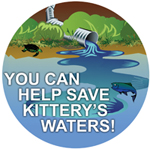You Can Make a Difference
What you do in and around your home impacts your watershed. Even the smallest home and yard changes can make a big difference along your waterfront and possibly save you money. Explore these different ways to make sure your house is part of the solution to water pollution. When you're ready to make some changes, or if you already have, be sure to take the pledge to show your commitment to protect Kittery's waters.
The Problem
The rain-water that flows off our streets and yards can carry a nasty mix of heavy metals, oil, fertilizers, pesticides, yard waste, detergents, and animal feces! City storm drains deliver these substances directly to our streams and lakes, making life tough for the animals that live there. It’s tough for people too — water pollution often prevents us from enjoying our own waterways.
The Solution
We are all citizens of a watershed. The problem of water pollution must be solved just as it was created; by the combined actions of all citizens who live and work in the watershed. If each of us changes a few of our daily habits, we can each protect the waters of Kittery and Eliot.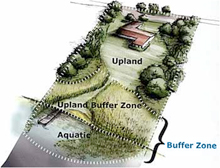 1.
Build a Better Buffer
1.
Build a Better Buffer
Grass mowed to the water’s edge provides a conduit for pollutants to enter waterways. The lack of deeper root systems in turf grass and removal of the natural shoreline can lead to erosion at the water’s edge. Compromised or missing buffers can increase the effects of polluted runoff, reduce the quality of our water, and decrease property values. Buffers are the single most effective protection for our water resources – plus they provide priceless recreational and aesthetic value. Buffers are a low-tech, high-performance option for stormwater management and resource protection that you can do in your own backyard. Learm more about how to build a better buffer.
2. Care for Your Lawn
A healthy lawn resists disease, drought damage, and weeds. While many lawns benefit from some extra nutrients once a year, fertilizing more often can harm your lawn and contribute to water quality problems. Excess fertilizers can run off when it rains, causing aquatic plants to go on growth and blooming binges. This robs the water of oxygen needed by aquatic organisms. Proper fertilizing, mowing and watering practices will result in a high-quality turf that protects water quality by reducing storm water runoff, minimizing soil erosion and improving water infiltration into the soil. Learm more about caring for your lawn AND the water.
3. Prevent Erosion
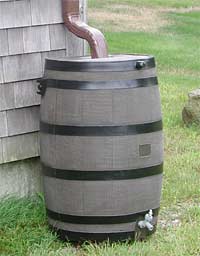 Believe
it or not, the biggest threat to Maine’s water quality is plain old dirt,
washing into our rivers, lakes and streams... from our lawns, roads, driveways
and construction sites. Wherever you see bare soil, you’re seeing water
pollution just waiting to happen. Because without vegetation, dirt washes
away every time it rains. And it ends up in our rivers, lakes and streams.
Dirt clogs waterways and destroys fishes’ gills. It also carries oil, fertilizer,
pesticides and other chemicals that contaminate the water and lead to shallower
streams and scummy green lakes. The erosion process can be accelerated or
slowed by the practices you adopt, and sediment going into the creek is
a pollutant. Learn more about preventing
erosion on your property.
Believe
it or not, the biggest threat to Maine’s water quality is plain old dirt,
washing into our rivers, lakes and streams... from our lawns, roads, driveways
and construction sites. Wherever you see bare soil, you’re seeing water
pollution just waiting to happen. Because without vegetation, dirt washes
away every time it rains. And it ends up in our rivers, lakes and streams.
Dirt clogs waterways and destroys fishes’ gills. It also carries oil, fertilizer,
pesticides and other chemicals that contaminate the water and lead to shallower
streams and scummy green lakes. The erosion process can be accelerated or
slowed by the practices you adopt, and sediment going into the creek is
a pollutant. Learn more about preventing
erosion on your property.
4. Garden Smart
In some cases, invasive nonnative plants have displaced native plants,
thereby degrading the integrity and diversity of our native plant communities.
Other invasive nonnative plants in Maine include multiflora rose, common
and glossy buckthorns, shrubby honeysuckles, Asiatic bittersweet, Japanese
knotweed, and Japanese barberry. Dumping yard waste or plant materials can
create blockages to natural or man-made waterways. Excess vegetation can
trap sediments and block the streambed, causing flooding. Dumped yard waste
spreads invasive species, which can pose a threat to existing native vegetation
and reduce the diversity of natural systems. Decomposing vegetation and
excess nutrients reduce the oxygen available in streams for fish and aquatic
life. Learn more about how gardening smart can keep your garden - and Kittery's
waters - healthy.
5. Reduce Runoff
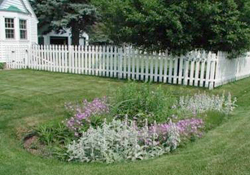 Excessive
aquatic plant growth and algal blooms, decreased water clarity, low stream
flows and flashy flows, degraded habitat and shoreline erosion – all these
are a result of increased and more polluted runoff from all of our homes.
We’ve removed the natural “sponge” function of the land around us by creating
surfaces that water can’t penetrate (driveways, sidewalks, rooftops and
even yards). Since the water can longer infiltrate into the ground, it is
forced to move along – often times carrying with it harmful chemicals and
soil. Learn how you can address
runoff before it leaves your property. Better yet, keep water on your
property for use in areas such as your garden by installing
a rain barrel to collect rooftop rain or creating
rain gardens to capture and slow down runoff.
Excessive
aquatic plant growth and algal blooms, decreased water clarity, low stream
flows and flashy flows, degraded habitat and shoreline erosion – all these
are a result of increased and more polluted runoff from all of our homes.
We’ve removed the natural “sponge” function of the land around us by creating
surfaces that water can’t penetrate (driveways, sidewalks, rooftops and
even yards). Since the water can longer infiltrate into the ground, it is
forced to move along – often times carrying with it harmful chemicals and
soil. Learn how you can address
runoff before it leaves your property. Better yet, keep water on your
property for use in areas such as your garden by installing
a rain barrel to collect rooftop rain or creating
rain gardens to capture and slow down runoff.
6. Keep It Clean
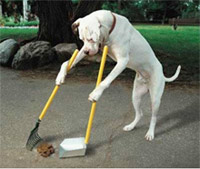 At
least half of all surface-water pollution in the country comes from contaminated
runoff. Pet waste contributes to the pollution that is transported by runoff
every time it rains. Waste from dogs, cats, horses and waterfowl may contain
disease-causing organisms that are harmful to both humans and animals. Animal
waste also contains nutrients that encourage weed and algae growth in lakes
and streams. Simply cleaning up
after you pet can help to eliminate these risks. Most septic systems,
even with maintenance, will work effectively for only an average of 15 to
25 years. To help protect against premature failure, the homeowner can follow
simple septic system maintenance procedures to help reduce sludge build-up,
reduce water use, eliminate toxic waste, keep the system’s bacteria working
and protect the leaching system. Many household products contain hazardous
ingredients which, if not properly handled, may end up in our waterways.
We can limit our impact by reducing or eliminating
the most toxic products and choosing alternatives that are less harmful.
Simply eliminating
the use of laundry detergents with optical brighteners will no only
reduce the risk of human health issues but reduce the exposure of these
toxins to fish and other animal and plant life.
At
least half of all surface-water pollution in the country comes from contaminated
runoff. Pet waste contributes to the pollution that is transported by runoff
every time it rains. Waste from dogs, cats, horses and waterfowl may contain
disease-causing organisms that are harmful to both humans and animals. Animal
waste also contains nutrients that encourage weed and algae growth in lakes
and streams. Simply cleaning up
after you pet can help to eliminate these risks. Most septic systems,
even with maintenance, will work effectively for only an average of 15 to
25 years. To help protect against premature failure, the homeowner can follow
simple septic system maintenance procedures to help reduce sludge build-up,
reduce water use, eliminate toxic waste, keep the system’s bacteria working
and protect the leaching system. Many household products contain hazardous
ingredients which, if not properly handled, may end up in our waterways.
We can limit our impact by reducing or eliminating
the most toxic products and choosing alternatives that are less harmful.
Simply eliminating
the use of laundry detergents with optical brighteners will no only
reduce the risk of human health issues but reduce the exposure of these
toxins to fish and other animal and plant life.
Take the Pledge
What you do in and around your home impacts your watershed. Even the smallest home and yard changes can make a big difference along your waterfront and possibly save you money. Take the Protect Kittery Waters watershed pledge to commit to protect Kittery’s water resources.

